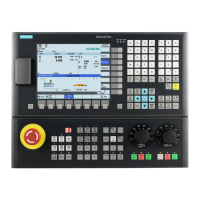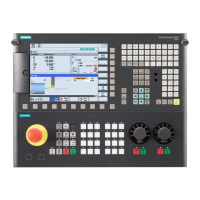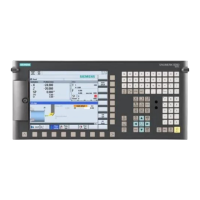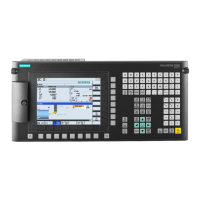Programming and Operating Manual (Turning)
01/2017
127
Reading and writing PLC variables
Functionality
To allow rapid data exchange between NC and PLC, a special data area exists in the PLC user interface with a length of 512
bytes. In this area, PLC data are compatible in data type and position offset. In the NC program, these compatible PLC
variables can be read or written.
To this end, special system variables are provided:
;Data word (16-bit value)
;Data double-word (32-bit value)
;REAL data (32-bit value)
"n" stands here for the position offset (start of data area to start of variable) in bytes
;Reading a REAL value, offset 4 (starts at byte 4 of range)
Note
The reading of variables generates a preprocessing stop (internal STOPRE).
Note
Writing of PLC tags is generally limited to a maximum of three tags (e
lements).
Where PLC tags are to be written in rapid succession, one element will be required per write operation.
If more write operations are to be executed than there are elements available, then block transfer will be required (a
preprocessing stop may
need to be triggered).
$A_DBB[1]=1 $A_DBB[2]=2 $A_DBB[3]=3
Unconditional program jumps
Functionality
NC programs process their blocks in the sequence in which they were arranged when they were written.
The processing sequence can be changed by introducing program jumps.
The jump destination can be a block with a
or with a
. This block must be located within the program.
The unconditional jump instruction requires a separate block.
;Jump forward (in the direction of the last block of the program)
;Jump backwards (in the direction of the first block of the program)
;Selected string for the label (jump label) or block number

